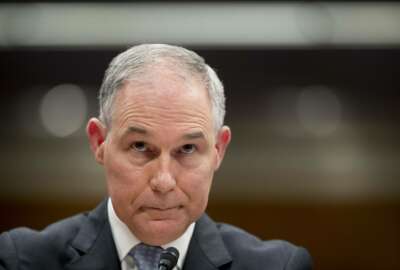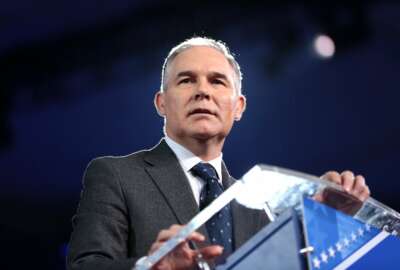
EPA proposal on regulations: More consistency, or end-run around requirements?
The EPA says it wants to “provide a consistent and transparent interpretation” of the cost-benefit analysis required for most major regulations, but...
The Environmental Protection Agency is considering changing the way it creates regulations. An advance notice of proposed rulemaking (ANPRM) is seeking comments from the public on a proposal to “provide a consistent and transparent interpretation” of the cost-benefit analysis required for most major regulations.
But environmentalists say it’s an end-run around current requirements for environmental regulations.
“What this rule seeks to do is empower [EPA Administrator Scott] Pruitt in key ways, or the EPA in key ways, to evade how these laws are supposed to be implemented, in ways that undermine their environmental and public health goals,” said James Goodwin, a senior policy analyst with the Center for Progressive Reform, during a June 27 webinar.
President Bill Clinton signed executive order 12866 in 1993, which stated that agencies should “assess all costs and benefits of available regulatory alternatives, including the alternative of not regulating. … Agencies should select those approaches that maximize net benefits … unless a statute requires another regulatory approach.”
But the EPA says most statutes are unclear about exactly how EPA should consider those costs and benefits. Some require specific metrics, while others refer simply to “costs” or “economic factors” among various other factors to be considered. Further, courts occasionally add their interpretations to those of Congress and the agency itself. EPA says these varied metrics and interpretations of the cost-benefit analysis requirement have led to confusion and undue complexity.
And environmentalists don’t dispute that.
“So the result is that what we have today and have had for the last number of decades is this sort of bizarre contradiction,” said Amy Sinden, Temple University law professor and board member for CPR, during the webinar. “In many instances, you have the statute telling EPA one thing about how they need to set standards. And then you have this executive order saying the opposite, saying no, you have to use cost benefit analysis.”
The problem with cost-benefit analysis at the EPA, she said, is two-fold. First, it’s very difficult to put a quantitative, often monetary value on things like the health and lives of individuals, or saving a species from extinction. That’s precisely why Congress has often excluded regulations dealing with environmental impact or public health from the cost-benefit analysis, she said. In fact, some statutes outright prohibit it.
Second, costs and benefits of a regulation can ripple outward almost infinitely. Consider, for example, Sinden’s example of requiring a power plant to add air scrubbers. What is the cost to the owners of the plant? Does that added cost affect the employees of the plant? Does it get passed along to the consumers? If the consumers have to spend more on electricity, do they spend less at the grocery store? How does that affect the farmers that supply the food?
“When you start thinking about it, you can see that there are just endless ripple effects from any action government could take on the cost side and the benefit side,” Sinden said.
So a truly comprehensive analysis is nearly impossible, and in practice can almost always be criticized for not going far enough.
“My fear is that they will propose a rule that will in fact require all standard-setting to be based on a cost-benefit analysis,” Sinden said. “If they do that, that will violate lots of statutory provisions. But it will of course require litigation to resolve those questions, and get such a regulation struck down.”
But according to the ANPRM, industry has argued that considering compliance costs divided by total emission reductions can give the appearance of cost effectiveness, when it could be more cost effective to consider pollutants separately. Industry has also protested EPA’s reliance on estimated or assumed benefits of regulation.
The comment period for this advance notice ends July 13. After that, EPA will take the comments into account, and propose an actual rule, which will then have its own comment period.
Copyright © 2025 Federal News Network. All rights reserved. This website is not intended for users located within the European Economic Area.
Daisy Thornton is Federal News Network’s digital managing editor. In addition to her editing responsibilities, she covers federal management, workforce and technology issues. She is also the commentary editor; email her your letters to the editor and pitches for contributed bylines.
Follow @dthorntonWFED
Related Stories




